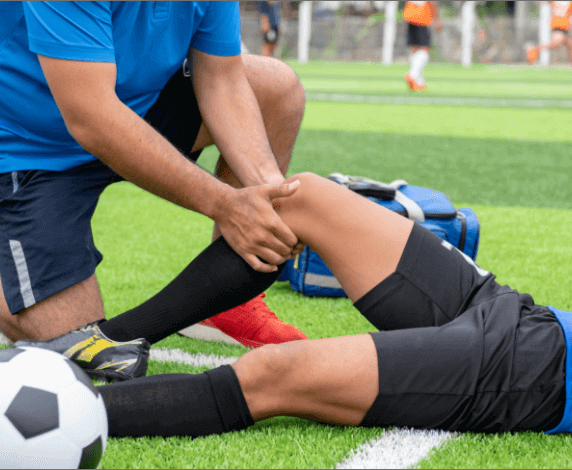Arthroscopy , Sports Injury
Common arthroscopic procedures for knee include:
- Removal or repair of a torn meniscus
- Reconstruction of a torn anterior cruciate ligament
- Removal of inflamed synovial tissue
- Trimming of damaged articular cartilage
- Removal of loose fragments of bone or cartilage
- Treatment of patella (kneecap)problems
- Treatment of knee sepsis (infection
At this point, a positioning device is sometimes placed on the leg to help stabilize the knee while the arthroscopic procedure takes place.
Preparing for Surgery:
- Evaluations and Tests
- Your orthopaedic surgeon may recommend that you see your primary doctor to assess your general health before your surgery
- To help plan your procedure, your orthopaedic surgeon may order preoperative tests. These may include blood tests or an electrocardiogram (EKG).
Admissions Instructions
If you are generally healthy, your knee arthroscopy will most likely be performed as an outpatient. This means you will not need to stay overnight at the Be sure to inform your orthopaedic surgeon of any medications or supplements that you take. Before your surgery, a member of the anesthesia team will talk with you. Knee arthroscopy can be performed under local, regional, or general anesthesia:
Positioning Once you are moved into the operating without room, you will be given anesthesia. To help prevent surgical site infection, the skin on your knee will be cleaned. Your leg will be wide covered with surgical draping that exposes the prepared incision site.
Procedure To begin the procedure, the surgeon will make a few small incisions, called “portals,” in your knee. A sterile solution will be used to fill the knee joint and rinse away any cloudy fluid. This helps your orthopaedic surgeon see the structures inside your knee clearly and in detail. Then based upon the operation either cleaning or repair of meniscus, ACL ligament reconstruction is done.
Closure A soft bandage will protect your incisions while they heal. Most knee arthroscopy procedures last less than an hour. The length of the surgery will depend upon the findings and the treatment necessary .
Dressing Care You will leave the hospital with a dressing covering your knee. Keep your incisions clean and dry. Your surgeon will tell you when you can shower or bathe, and when you should change the dressing.
Complications The complication rate after arthroscopic surgery is very low. If complications occur, they are usually minor and are treated easily.
Possible postoperative problems with knee arthroscopy include:
- Infection
- Blood clots
- Knee stiffness
- Accumulation of blood in the knee
Recovery After surgery, you will be moved to the recovery room and should be able to go home within 1 or 2 hours. Be sure to have someone with you to drive you home and check on you that first evening.
Pain Management After surgery, you will feel some pain. This is a natural part of the healing process. Your doctor and nurses will work to reduce your pain, which can help you recover from surgery faster.
Bearing Weight Most patients need crutches or other assistance after arthroscopic surgery.
Rehabilitation Exercise You should exercise your knee regularly for several weeks after surgery. This will restore motion and strengthen the muscles of your leg and knee. Working with a physical therapist can help you achieve your best recovery. Therapeutic exercise will play an important role in how well you recover. A formal physical therapy program may improve your result.
Driving Your doctor will discuss with you when you may drive. Typically, patients can drive from 1 to 3 weeks after the procedure.
Follow up After discharge, further wound care will be provided by your surgeon, who will also remove the sutures 10 to 12 days after the procedure. Follow-up examinations by the surgeon take place at 2 and 6 weeks. Further follow-up appointments with the surgeon may be arranged individually, depending on the problem in the joint and the repair that was made.

